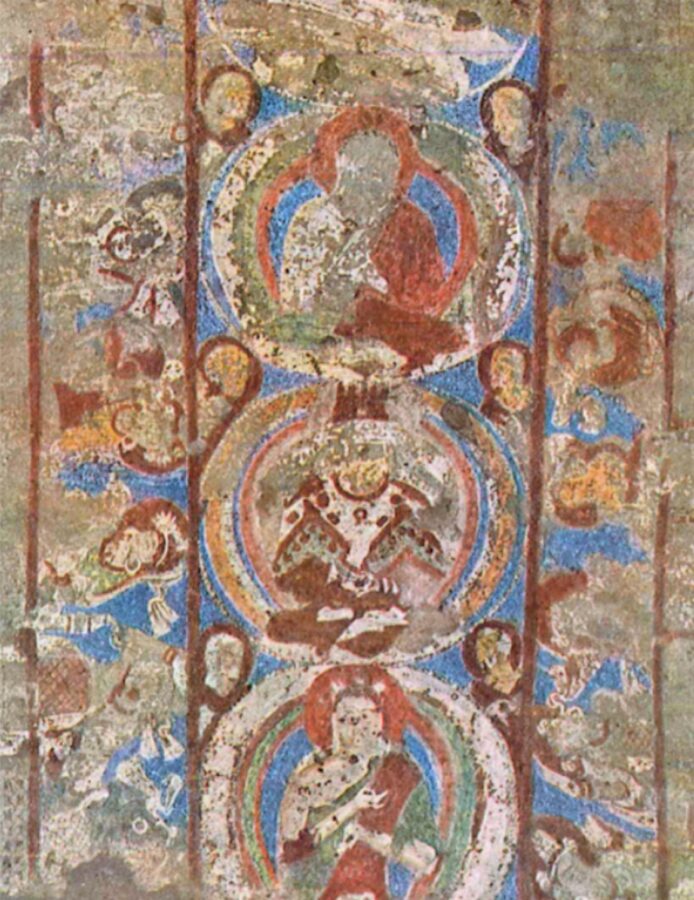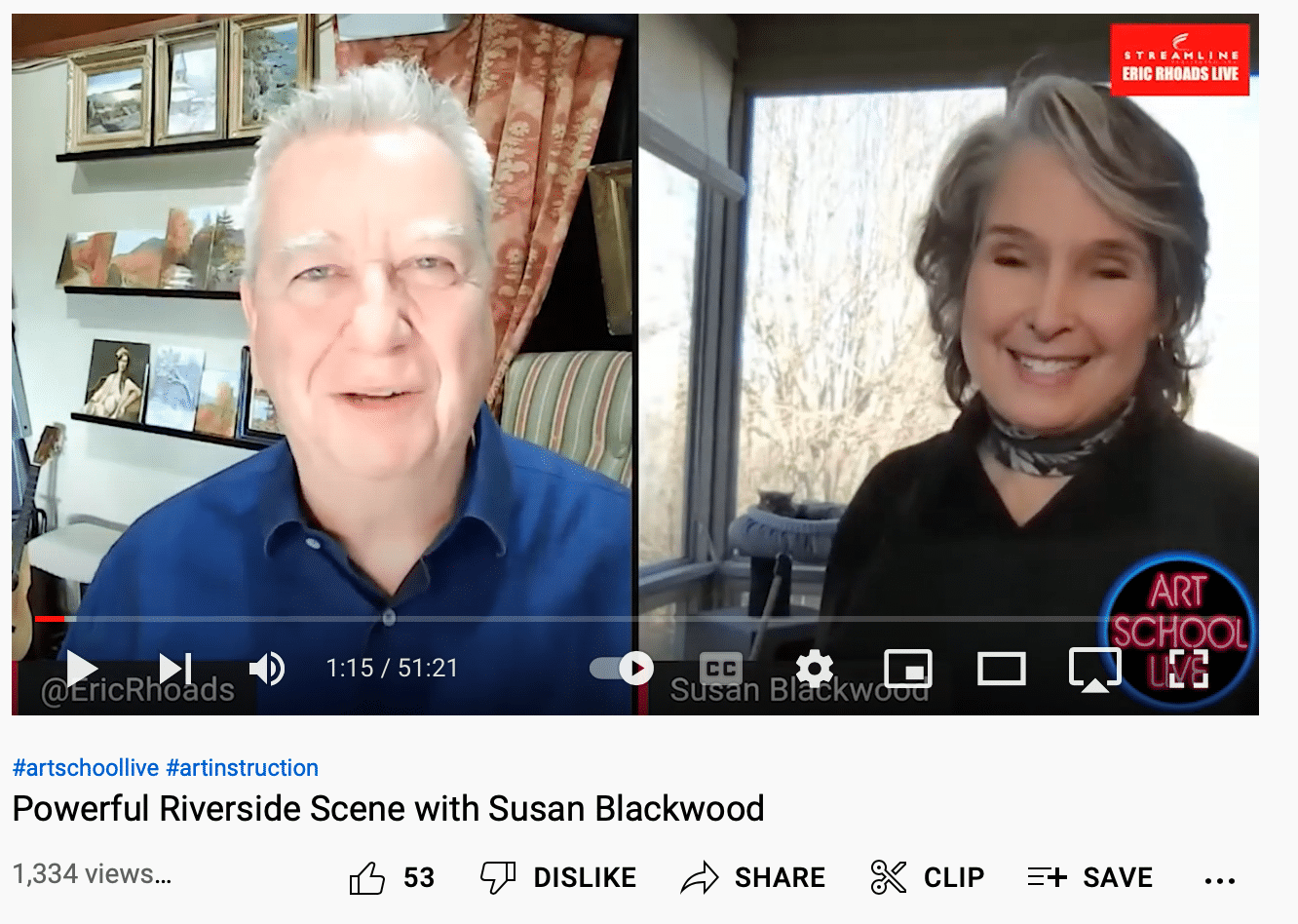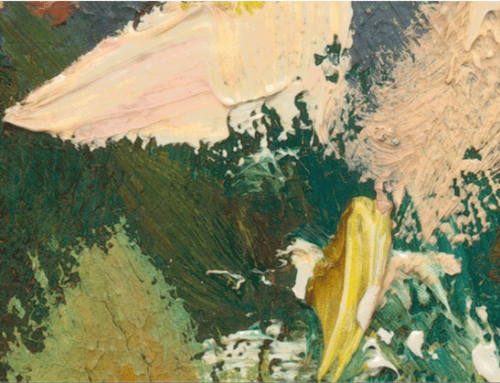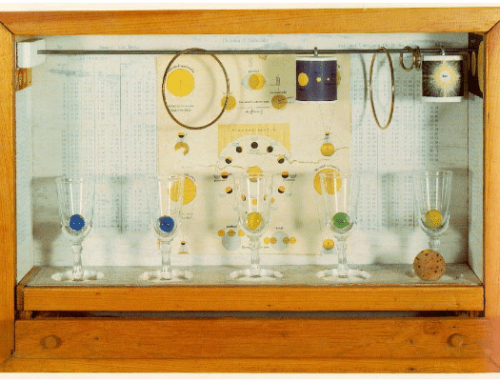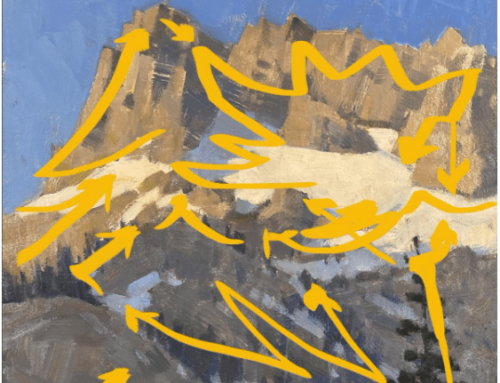The oldest oil paintings in the world predate the European “invention” of oil paining by many hundreds of years.
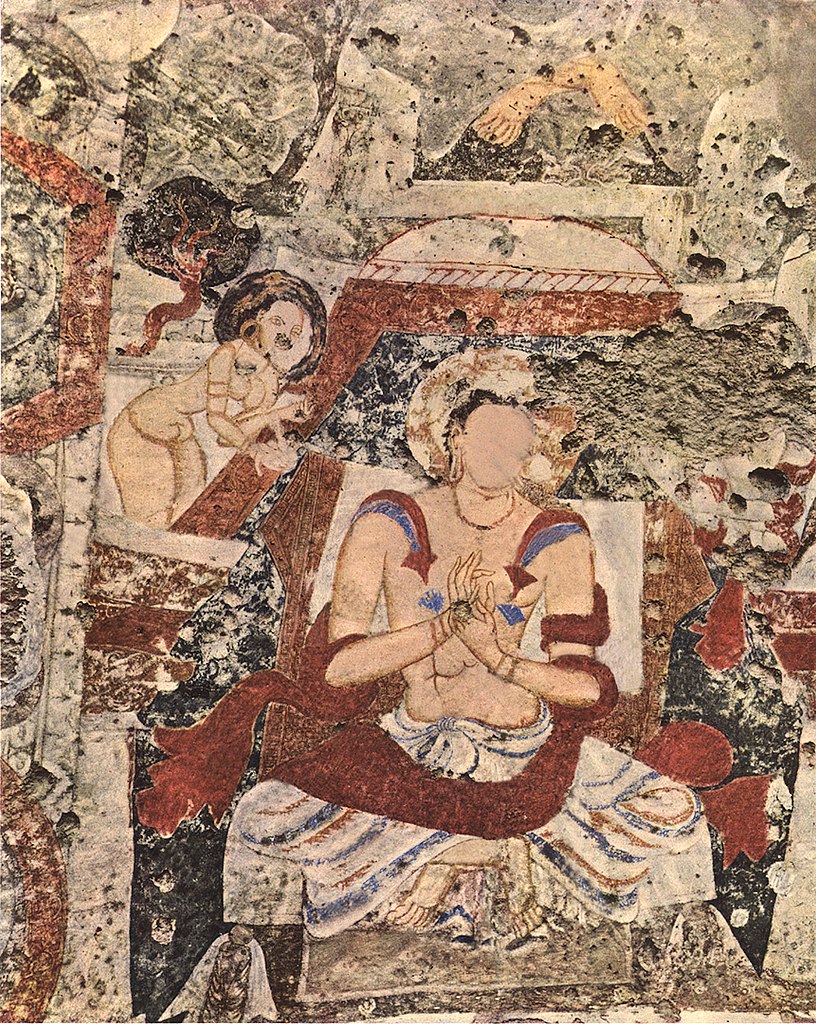
Bamiyan oil painting, c. 650AD, Western Buddha, East Ceiling Niche
The oil paintings are part of a series of murals that barely survived deliberate shelling by the Taliban only because they were tucked into a mountain made of stone behind two colossal statues of Buddha that were the conservative regime’s main target.
Until very recently, the art history textbooks used in most American and European colleges and art schools pegged the 15th century Northern Renaissance (Holland, Flanders, and Germany) as the birthplace of the medium. Flemish painter Jan van Eyck usually got the credit for first mixing colorful pigments with linseed oil and oil from nuts, and he still does in poorly informed sources.
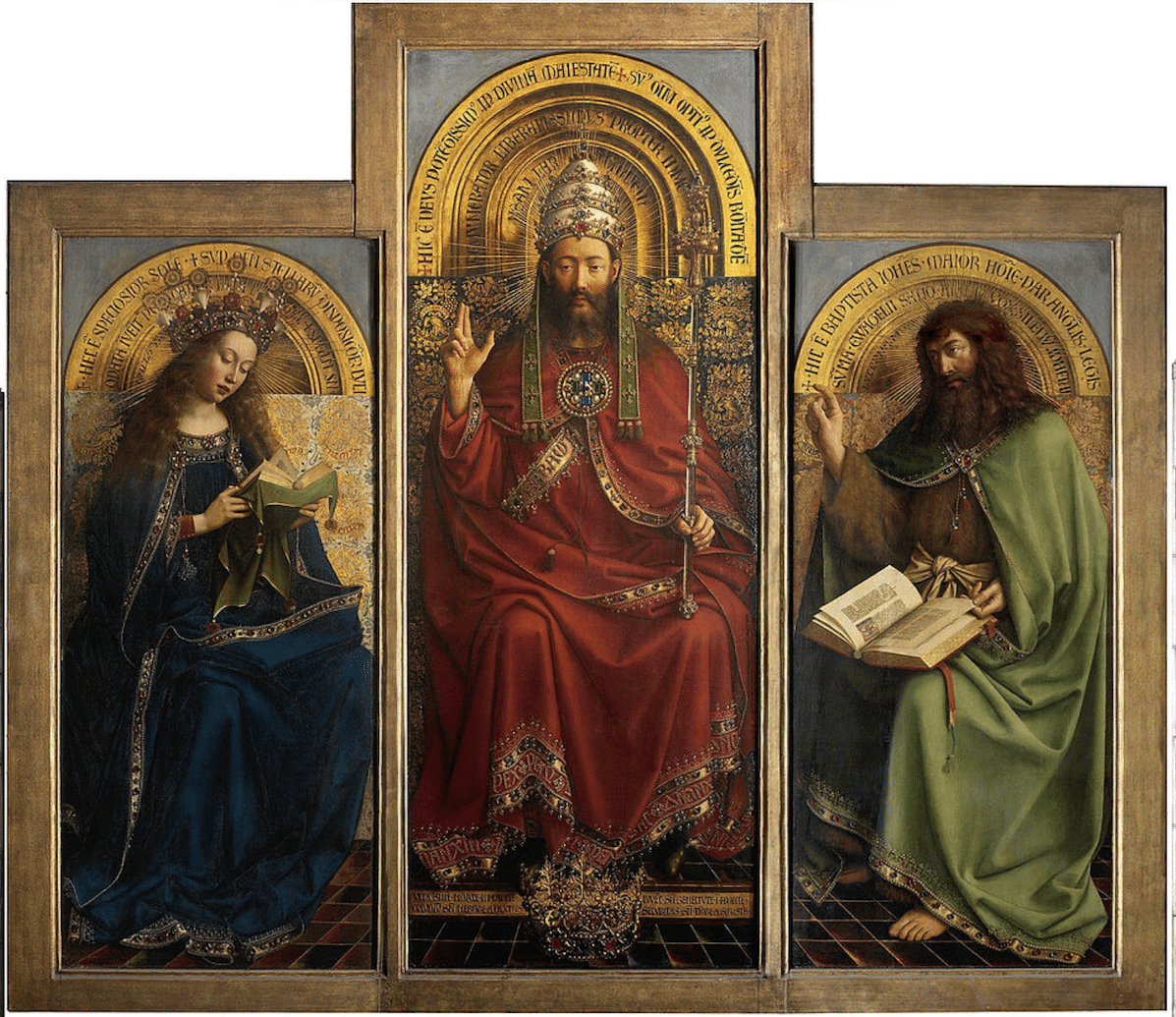
Jan van Eyck, central panel from the altarpiece of the Cathedral of Ghent, oil on wood, c. 1430
In fact, the technique of suspending and binding pigments in oil dates to at least the seventh century and almost certainly earlier, as the testing of pigments from the oldest known oil paintings in the Bamiyan cave paintings of Afghanistan proved in 2008. Europeans adopted the technique with the Early Netherlandish painting in Northern Europe, and oil painting quickly eclipsed the pre-Renaissance use of tempera paints throughout the land.
Bamiyan, an ancient settlement along the silk road, is famous for the Bamiyan Buddhas, two monumental sculptures carved from the living rock that amazed both Buddhist and non-Buddhist visitors for more than a thousand years. They were the largest standing religious statues in the world before the Taliban regime shelled them in 2001, also damaging the rooms and tunnels behind them and graffitiing over the murals there. Nonetheless, scientists had a chance to collect and test fragments of the paint as part of Unesco World Heritage conservation efforts to salvage what remains at the site.

Bamiyan Valley showing former locations of the Bamiyan Buddhas (empty archways on either side of the panorama). Photo by Francois Foliot, 1975 (modified) – license/attribution.
The mountainous province’s eponymous capital city lies approximately 240 kilometres north-west of Kabul, the national capital. Rich in historical architecture including elaborate castles and mosques, it is one of the busiest tourist attractions of Afghanistan. The Bamyan valley is known as the “shining Light” and “Valley of Gods.” It is likely that it always held some sacred significance for the people who settled there.
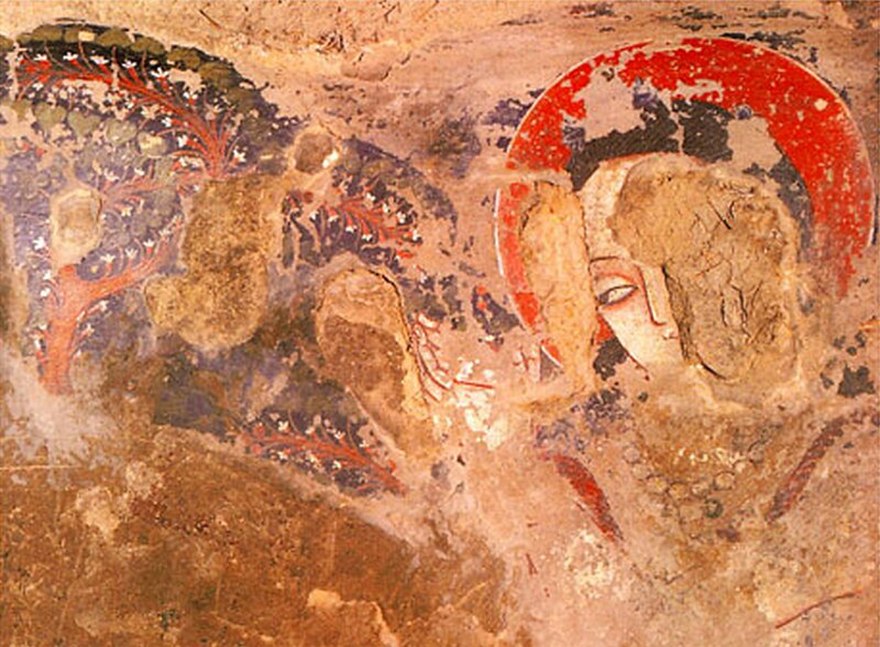
A haloed (holy) figure from one of the oil painted-murals in Bamiyan, Afghanistan.
The Bamiyan painters used many different pigments and ingredients showing a sophistication suggesting the 7th century wasn’t oil painting’s first rodeo. Analysis via Micro-X-ray spectroscopy, fluorescence, and diffraction of multiple layers of painty showed both organic and inorganic pigments and a variety of binders.
Apart from oil-based paint layers, some of the layers were made of natural resins, animal proteins, gums, and, in some cases, even included a resinous layer of varnish, a standard method of preserving the surface of oil painting still in use today.
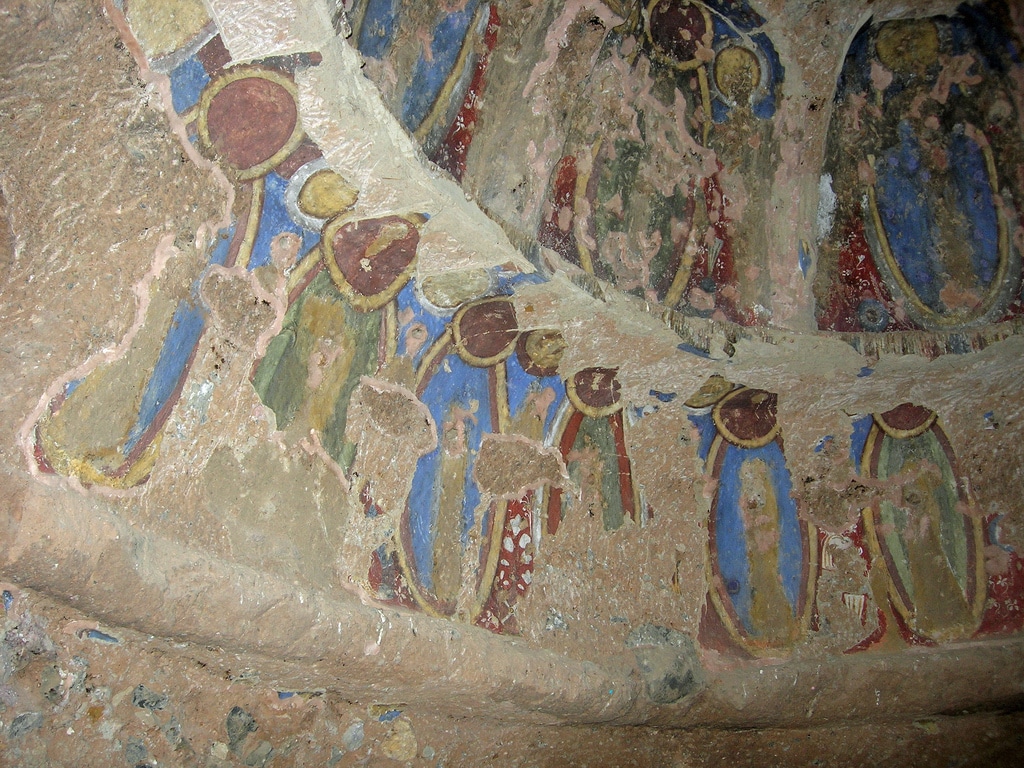
A section of the earliest discovered oil paintings (~650 AD) depicting buddhist imagery in Bamiyan, Afghanistan.
The imagery is colorful, naturalistic, and clearly spiritual. A copy made of one of the works in the 1930s resembles the format used nearly 700 years later in medieval Christian art (see below).
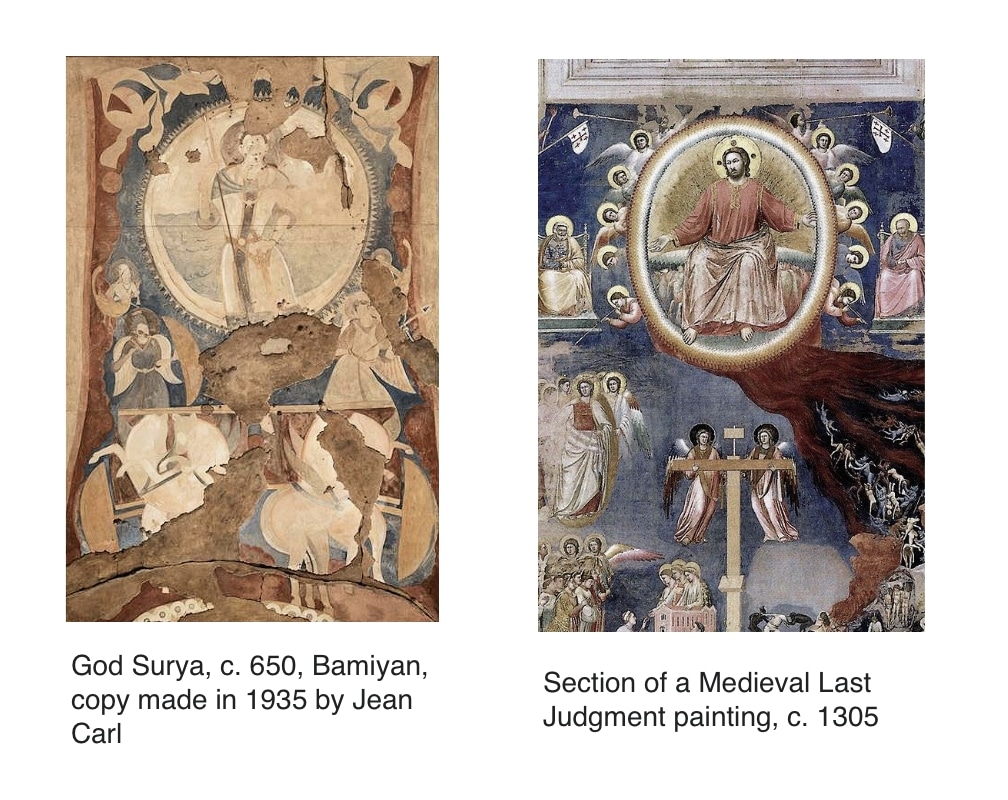
Elsewhere, Buddhas and other figures from classical Buddhist religious texts appear throughout, often in symmetrical or celestial patterns and mandala-like compositions intended to evoke spiritual contemplation.
I find it remarkable that the oldest known oil paintings are religious in nature, as is so much of the magnificent oil painting created during the Northern and European Renaissance and Baroque periods of art. Art has ever pointed to realms beyond.
Hour-Long Video Breaks Down Some Do’s and Don’ts of Oil Painting
Contemporary oil paint wisdom flows from landscape artist Susan Blackwood’s words of advice on painting rivers (and painting in general) in an hour-long video watchable on YouTube. It’s an interview with Inside Art publisher Eric Rhoads that is full of the kind of inside information I wish I’d been privy to when I was just beginning with oils. Enjoy.
-Chris

